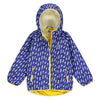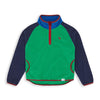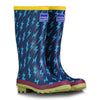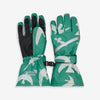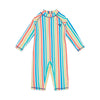
KS2 - Maths - Venn Diagrams
Learning Objective: Measurement and Data Handling
Resources
Welly boots and waterproof trousers
3-5 puddles of varying lengths
Sticks of 10 cm in length and measuring tape
Stones with numbers on them Chalk Pencils, paper and clipboards.
Introduction
Gather the class together outside. Explain that they will be collecting data and using different ways to display the information outside. Discuss together line graphs, Venn diagrams and Carroll diagrams, and revisit the children’s knowledge of these.
Activity
Take the children to the puddles and ask them to measure the lengths and widths of the puddles with a measuring tape, using the sticks, and to record the information on their paper. Allow the children to leap in to the puddles, and then re-measure the puddles lengths, observing and recording any changes. Using a line graph, ask the children to use the sticks to represent the length of the puddle, and a second one to represent the widths of the puddles. The children can then colour sticks in with a coloured chalk or charcoal, and repeat the representations on to the original line graphs and compare the lengths. Talk about dispersion and challenge the children to question the variables that changed the puddle sizes. Next draw a Venn diagram on the floor and ask the children to arrange the stones in to the correct sections of the diagram. Explain what a Carroll diagram is, and model one on the playground, using rough / not rough, brown / not brown and a selection of sticks. Then allow the children time and space to create their own Carroll and Venn diagrams and allow them to use natural materials such as leaves and grass.
Extension
Create a De Bono’s PMI chart or “Plus, Minus, Interesting” chart, drawing on the playground with chalk. Ask the children to stand behind any of the variables to review the activity. Allow them to take turns to do this. This act in itself creates a simple graph.



